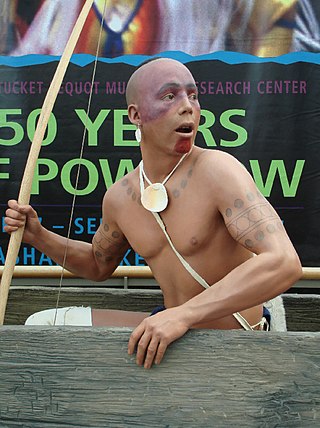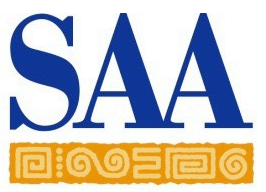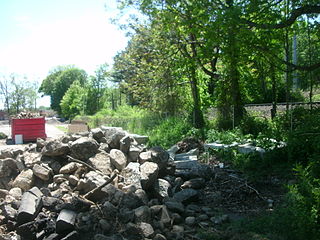
The Pequot are a Native American people of Connecticut. The modern Pequot are members of the federally recognized Mashantucket Pequot Tribe, four other state-recognized groups in Connecticut including the Eastern Pequot Tribal Nation, or the Brothertown Indians of Wisconsin. They historically spoke Pequot, a dialect of the Mohegan-Pequot language, which became extinct by the early 20th century. Some tribal members are undertaking revival efforts.

Wilton is a town in Fairfield County, Connecticut, United States. As of the 2020 census, the town population was 18,503. The town is part of the Western Connecticut Planning Region.

Oliver Wolcott Sr. was an American Founding Father and politician. He was a signer of the United States Declaration of Independence and the Articles of Confederation as a representative of Connecticut, and the nineteenth governor of Connecticut. Wolcott was a major general for the Connecticut militia in the Revolutionary War serving under George Washington.

The Pequot War was an armed conflict that took place in 1636 and ended in 1638 in New England, between the Pequot tribe and an alliance of the colonists from the Massachusetts Bay, Plymouth, and Saybrook colonies and their allies from the Narragansett and Mohegan tribes. The war concluded with the decisive defeat of the Pequot. At the end, about 700 Pequots had been killed or taken into captivity. Hundreds of prisoners were sold into slavery to colonists in Bermuda or the West Indies; other survivors were dispersed as captives to the victorious tribes.

Prudence Crandall was an American schoolteacher and activist. She ran the Canterbury Female Boarding School in Canterbury, Connecticut, which became the first school for black girls in the United States.

The Norwich Free Academy (NFA), founded in 1854 and in operation since 1856, is a coeducational independent school for students between the 9th and 12th grade. Located in Norwich, Connecticut, the Academy serves as the primary high school for Norwich and the surrounding towns of Canterbury, Bozrah, Voluntown, Sprague, Lisbon, Franklin, Preston, and Brooklyn. It was recognized by the U.S. Department of Education as a National Blue Ribbon School of Excellence in 2001.

The Society for American Archaeology (SAA) is a professional association for the archaeology of the Americas. It was founded in 1934 and its headquarters are in based in Washington, D.C. As of 2019, it has 7,500 members. Its current president is Deborah L. Nichols. Notable past presidents include Dean R. Snow.
The Jewish Ledger is Connecticut's only weekly Jewish newspaper. The Hartford newspaper also has a monthly edition serving the Greater Hartford and western Massachusetts area.

The Furnace Hill Brook Historic and Archeological District in a historic district in Cranston, Rhode Island.

The Sassafras Site, designated RI-55, is a prehistoric archaeological site in Albion, a village of Lincoln, Rhode Island. The site was discovered by archaeologists while surveying an area for a potential replacement for the Albion Street bridge, which spans the Blackstone River between Lincoln and Cumberland. The site encompasses a regionally significant quartz stone tool workshop.
The Moosup River Site (RI-1153) is an archaeological site in Coventry, Rhode Island. The site is located on a bluff overlooking the Moosup River in western Coventry, not far from the Connecticut state line. The site was identified and excavated in 1985, yielding a quartzite Neville point, and radiocarbon dates to 3050 BCE.
Juliet Morrow is an American archaeologist and a professor of Anthropology at Arkansas State University in Jonesboro, Arkansas.

The Rockrimmon Rockshelter is an archeological site in Stamford, Connecticut that was listed on the National Register of Historic Places in 1994. The site is significant as an early Native American shelter and is centered on a boulder about 60 feet high that was used as the shelter. Native American tools and points were discovered at the site during excavations in 1975 and 1980.
The Cooper Site is an archaeological site in Lyme, Connecticut. On a terrace of the Connecticut River near Hamburg Cove, the site has yielded evidence of Middle to Late Woodland occupation. The Late Woodland component includes evidence interpreted as the site of a wigwam, with a large number of stone chips consistent with the development of stone tools at the site. The Middle Woodland component is interpreted as a series of small camps whose occupation was relatively brief. Finds at the site have been dated as far back as c. 500 CE, and include narrow-stemmed projectile points, most of which were made from local quartz, but also from more distant chert and hornfels, some which is from quarries as far off as New Jersey. Pottery finds include fragments with dentate stamping.

Kent Road station was a commuter rail stop on the Danbury Branch of the Metro-North Railroad's New Haven Line. It was located near the border between Wilton and Norwalk, south of a grade crossing with Kent Road in Wilton, Connecticut. It opened in 1976 and closed in 1994. A previous station on the site, South Wilton, closed in 1971.
Aaron Austin was an associate justice of the Connecticut Supreme Court of Errors from 1794 to 1807.
Timothy H. Ives is an American archeologist and a leading contributor to the contemporary debate over the origins of the stone heaps commonly found in New England's forested hills.
The Eastern States Archeological Federation is an archaeological society that was founded in 1933. Its member societies represent the Eastern United States and Canada. It has published a Bulletin since 1941 and an annual journal, Archaeology of Eastern North America, since 1973.
The Archaeological Society of Delaware is an archaeological society founded in 1933 to study the archaeology of Delaware in the United States and the surrounding region. It is a member of the Eastern States Archeological Federation. It publishes an annual scholarly journal, the Bulletin, past copies of which are available without subscription on the society's website.
Claudine Dauphin is a French archaeologist specialising in the Byzantine period. She is an Honorary Professor at the University of Wales, Lampeter.











